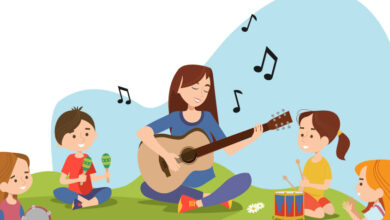
6 Reasons for Children to Play with Magnetic Tiles
Toys for children play an essential role in their life, but there are various toys to choose from, so selecting an appropriate toy is one thing parents need to meet. For the above situation, magnetic tiles could be a good option.
Table of Contents
Six Reasons for Choosing Magnetic Tiles
1. Magnetic Tiles Have A Rich Way of Playing
Magnetic tiles are toys that have magnetic pieces that connect. Magnetic tiles are types of interlocking building toy that has magnets embedded in the pieces, allowing them to connect. They come in various shapes and sizes, from squares to rectangles. The most common type of magnetic tile is square-shaped with four sides, but some may be rectangular in shape.
Magnetic tiles can be connected in so many ways! If you want to make a pyramid shape, simply stack your tiles on top of each other! Or maybe you are more interested in building something that looks like an octagon? No problem! Just connect your magnetic pieces as you would any other puzzle piece. You can even create something out-of-the-box by connecting two tiles at right angles—it’s up to you how creative you get!
Playing with magnetic tiles is a fun activity for children of all ages. It helps them develop fine motor skills and can also be a great way to teach your kids how to share and take turns.
2. Magnetic Tiles Have Good Stability
Magnetic tiles can be stacked on top of each other to create many different shapes and objects. For example, you can use the magnetic tiles to build a castle, make an octagonal house, make a pyramid or an animal shape, or maybe even create an entire city; you can also use the magnetic tiles to make pictures such as a tree, watermelon slice, or animals like lions and tigers.
These magnets are so strong that you’ll be able to build your creation easily. They won’t fall as long as you keep putting them together in the same way!
3. Magnetic Tiles Help to Cultivate Children’s Creativity
Children can build their creativity by using these kinds of toys. The Magnetic Tiles are one of the most popular toys that have been used in many schools and homes. These magnetic tiles can be used for building different structures like buildings, houses, bridges, and so on.
The children will learn through playing with this toy as they will have to think about how to arrange the pieces together so that they can create something big and beautiful.
They will also enhance their skills such as problem-solving because it requires them to figure out how best they can put everything together without affecting any other part of the structure that has already been built before them.
4. Magnetic Tiles Help Children Develop Fine Motor Skills
Magnetic tiles help children hone their fine motor skills, which can be useful in school and real life.
Fine motor skills play important roles in many activities, as they are necessary for handwriting, drawing, and other tasks that require precise movements.
Handwriting: The ability to write letters and words increases as toddlers become able to hold a pencil or crayon firmly enough to move it over the paper in an accurate manner. Magnetic tiles improve this skill by giving them something interesting to focus on while they practice their writing technique.
Drawing: Drawing involves coordination between the visual cortex (the part of your brain that processes visual information) and muscles in both hands and arms as well as in parts of your face such as lips and cheeks—all essential elements in creating realistic art! Magnetic squares help toddlers learn how best to draw something like an animal because they don’t need colored pencils or markers – just one color per magnet! This makes it much easier for them than trying out different colors all at once – this way everyone wins 🙂
5. Magnetic Tiles Help Children Learn to Share and Cooperate
Playing with Magnetic tiles can help children learn how to take turns and share with their friends or siblings.
Sharing: When you play with your child (or any child for that matter), you are helping them learn how to share. Children can learn how to share their toys, space, and attention with their friends or siblings. This is an important life skill because they will need to know how to be a good friend or teammate in the future.
Taking turns: Playing with other children also teaches them how to take turns when playing or doing something else together. For example, if one child wants the magnetic tiles but there are only two left and another child wants those same two magnetic tiles, then both children need to wait until the other one finishes using them before taking them back for themselves. If one of these children decides not to follow this rule then there could be a lot of arguments between them!
Working together: When playing games like Jenga® Tower Challenge Game where players take turns removing blocks from a stack while trying not to topple over each other’s towers, players begin working together as teams rather than individually competing against each other.”
Magnetic Tiles Help Children Think and Progress while Having Fun
Playing with magnetic tiles is fun and helps children grow. Playing with magnetic tiles can help children learn how to take turns, share, and build their creativity.
For example, playing with magnetic tiles can help teach your child the value of taking turns when it comes to playing with favorite toys. Children need to learn that not everyone gets everything they want at once so they will be able to experience different types of emotions for them to develop properly as adults!
Precautions in use
Magnetic Tiles are generally safe for children of all ages as long as they are used properly. A good rule of thumb is to supervise children at all times when they are playing with magnetic tiles. If a child is old enough to put the tiles in their mouth, it’s recommended that you take them away and put them away out of reach. Some parents decide not to allow the magnetic tiles in their home because they worry that their children will swallow the pieces or use them as projectiles.
If your child has an older sibling who can be responsible for watching him or her while playing with magnetic tiles, then you may want to consider letting your child have his or her own set of magnetic tiles. However, if you don’t have another adult around who can keep an eye on things, it might be better not to allow any young children alone with these toys until they are older and more mature physically and mentally than most babies and toddlers tend to be right now anyway!
Conclusion
I hope that you have found this article to be informative and helpful. It is important to remember that magnets should never be given to children under the age of three years old without adult supervision. If you do decide to purchase these toys for your child or grandchild, make sure that they are used properly and kept out of reach from any small objects such as coins or jewelry which could potentially become caught in them.








